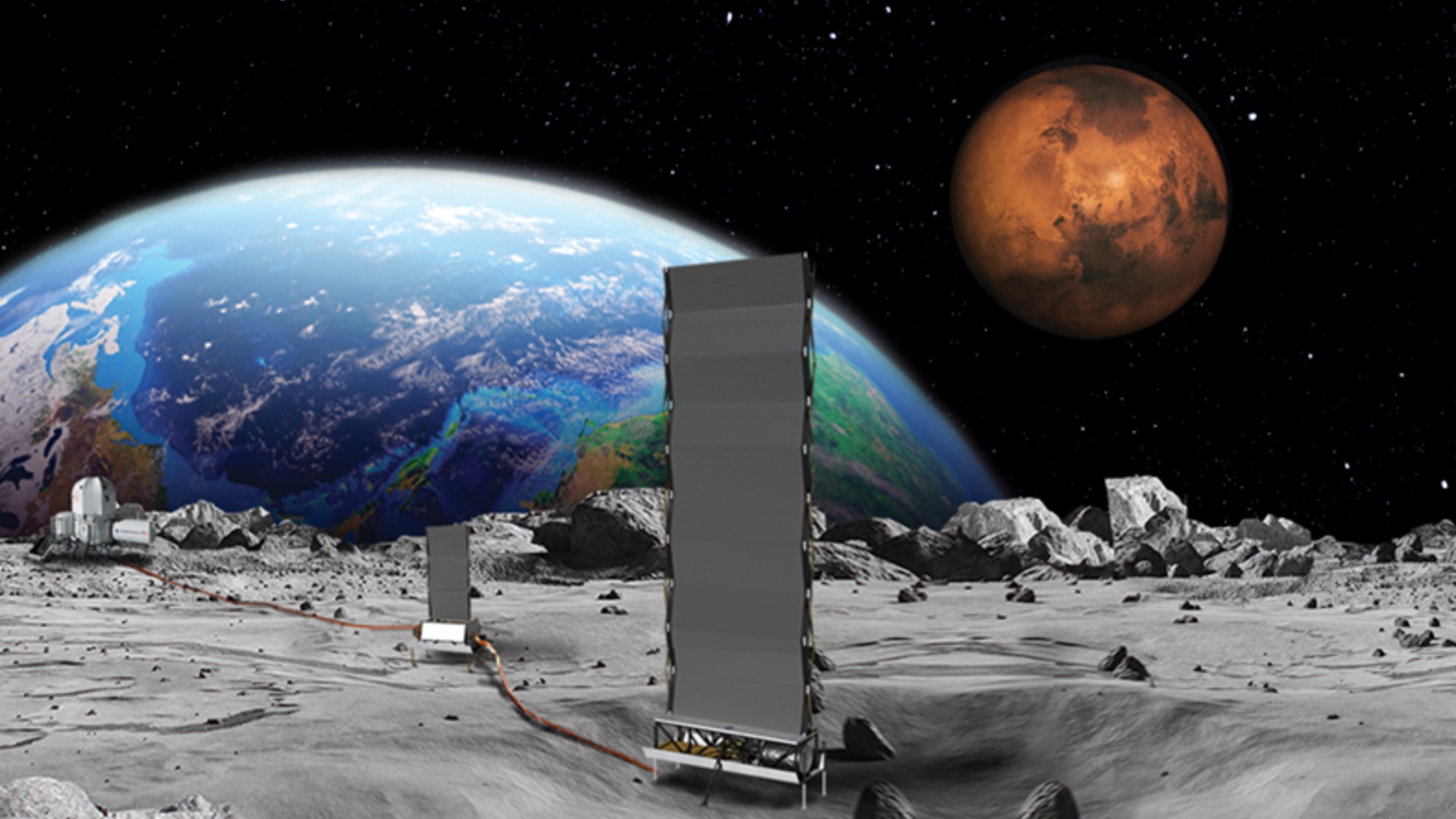Science
US Plans Lunar Nuclear Reactors to Boost Space Exploration

The United States is moving forward with a bold plan to construct nuclear reactors on the moon, aiming to enhance its presence in space exploration. Transportation Secretary and interim NASA Administrator Sean Duffy announced this initiative, which seeks to establish a sustainable energy source for long-term lunar missions. However, the project faces challenges, particularly due to budget constraints imposed by the Trump administration.
The White House supports the nuclear reactor project, asserting it could accelerate efforts to reach the moon and Mars, competing directly with China, which is pursuing similar goals. According to a report by Politico, a NASA official emphasized the importance of this initiative, stating, “It’s about winning the second space race.” Duffy highlighted that deploying nuclear technology on the moon could “transform the ability of humanity to travel and live in the solar system.”
Technical Challenges and Strategic Importance
The lunar environment presents unique challenges for energy production. A single lunar day consists of approximately two weeks of sunlight followed by two weeks of darkness. This harsh cycle complicates reliance on solar panels and batteries, making nuclear power an attractive alternative. A reactor on the lunar surface would provide a reliable energy source for extended stays, particularly during the prolonged nights.
The strategic implications of this project are significant. Establishing a nuclear reactor on the moon could ensure that the United States maintains its lead in space exploration, especially as both China and Russia have announced their own nuclear projects. Should either nation succeed in launching a reactor first, they could potentially claim a “keep-out zone,” hindering U.S. efforts to establish a presence on the lunar surface.
NASA has contemplated nuclear reactors for lunar missions for some time. The current directive from the administration aims to expedite these long-standing efforts, which have previously seen limited progress, according to Scientific American. Duffy has set an ambitious target, aiming for a 100-kilowatt reactor to be operational on the moon by 2030.
Budget Constraints and Future Prospects
Despite the promising outlook for lunar nuclear reactors, questions regarding the project’s viability linger, particularly in light of the Trump administration’s budget proposals. While there is a push to increase funding for human spaceflight initiatives, significant cuts to other programs, including a nearly 50% reduction for science missions, could stymie progress. Politico reports that NASA’s previous funding for research into a 40-kilowatt reactor is now in jeopardy.
Nonetheless, NASA plans to award contracts to at least two companies within six months following their request for proposals, indicating that the nuclear reactor initiative could still proceed. Astrophysicist Neil deGrasse Tyson voiced concerns during an interview with CBS Mornings, stating that while pursuing excellence in specific areas is commendable, cutting science programs across the board contradicts the broader goals of innovation and leadership in space exploration.
With the moon as a focal point for future human endeavors in space, the U.S. aims to harness nuclear power to solidify its influence in the cosmos. As plans unfold, the balance between ambition and budgetary realities will play a crucial role in determining the success of this groundbreaking initiative.
-

 Lifestyle5 months ago
Lifestyle5 months agoLibraries Challenge Rising E-Book Costs Amid Growing Demand
-

 Sports4 months ago
Sports4 months agoTyreek Hill Responds to Tua Tagovailoa’s Comments on Team Dynamics
-

 Sports4 months ago
Sports4 months agoLiverpool Secures Agreement to Sign Young Striker Will Wright
-

 Lifestyle4 months ago
Lifestyle4 months agoSave Your Split Tomatoes: Expert Tips for Gardeners
-

 Lifestyle4 months ago
Lifestyle4 months agoPrincess Beatrice’s Daughter Athena Joins Siblings at London Parade
-

 Science4 months ago
Science4 months agoSan Francisco Hosts Unique Contest to Identify “Performative Males”
-

 World4 months ago
World4 months agoWinter Storms Lash New South Wales with Snow, Flood Risks
-

 Science5 months ago
Science5 months agoTrump Administration Moves to Repeal Key Climate Regulation
-

 Business5 months ago
Business5 months agoSoFi Technologies Shares Slip 2% Following Insider Stock Sale
-

 Science5 months ago
Science5 months agoNew Tool Reveals Link Between Horse Coat Condition and Parasites
-

 Sports5 months ago
Sports5 months agoElon Musk Sculpture Travels From Utah to Yosemite National Park
-

 Science5 months ago
Science5 months agoNew Study Confirms Humans Transported Stonehenge Bluestones









